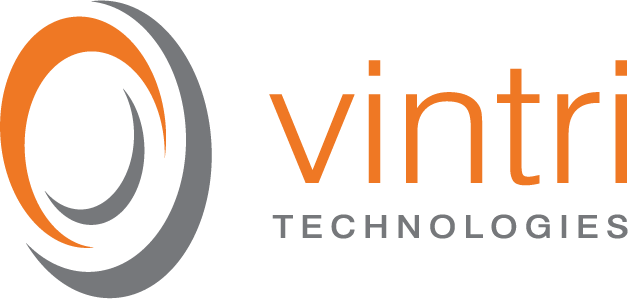Advanced Data Management Streamlines PHMSA Compliance
Operators must employ effective data management tools to efficiently meet new regulations.
The safe transportation of liquids and gases through pipelines is a paramount concern for both the energy industry and the public. As such, the Pipeline and Hazardous Materials Safety Administration (PHMSA) was established to ensure the integrity of pipeline operations in the United States. Operating under the Department of Transportation, PHMSA oversees the safety regulations and compliance standards for midstream operators, with the objective of preventing accidents and protecting the environment.
Understanding the PHMSA Gas Mega Rule
PHMSA’s Gas Mega Rule consists of three parts, with Final Rule One published in October 2019 and began to take effect in July 2020. The officially stated purpose of the Mega Rule is, “to increase the level of safety associated with the transportation of gas” across the United States.
The Rule encompasses various aspects of safe pipeline operation such as integrity management, record-keeping requirements, risk assessments, incident reporting, and more. PHMSA aims to ensure that gas operators prioritize safety while conducting their day-to-day operations.
In this article, we will be focusing on PHMSA requirements that specifically deal with the mandated addition of Traceable, Verifiable and Complete (TVC) records and data management related to validating MAOP with approved documentation.
Examples of Mega Rule components are directly impacted by TVC record requirements include:
• 192.67
• 192.205
• 192.517
• 192.607
• 192.227
• 192.624
Records: Material Properties
Records: Pipeline Components
Test Records
Material Verification
Welding Records
MAOP Verification
• 191.29
• 195.612
• 195.266
• 195.310
• 195.404
NPMS (Gas)
NPMS (Liquids)
Construction Record 1
Records
Maps and Records
The chart below illustrates the roll out of PHMSA requirements regarding records:
Evolving PHMSA regulatory requirements.
Challenges Faced by Midstream Operators under PHMSA Regulations
Complying with regulations as intricate as those stipulated by PHMSA poses significant challenges for midstream operators. The multifaceted nature of record-keeping and data integrity related regulatory components demands a meticulous approach to data management. Managing vast volumes of data, which encompasses everything from pipeline specifications to maintenance activities, necessitates precise and efficient record keeping.
Non-compliance with PHMSA regulations can result in penalties or MAOP reduction and, therefore, a trustworthy data management solution is now a top priority for midstream operators.
The Crucial Role of Effective Data Management in Achieving PHMSA Compliance
1. Complete & Accessible Documentation
The Gas Mega Rule mandates complete documentation accessibility for various aspects of pipeline operations. Effective data management ensures that all required documents are not only maintained accurately but are also easily accessible. This meticulous documentation is essential for demonstrating compliance during PHMSA inspections, aligning with Final Rule One requirements.
2. Material Traceability
Material traceability is the ability to track and document the origin, composition, and journey of materials used in the construction and maintenance of pipelines. The Gas Mega Rule stipulates specific material requirements for pipelines. Material traceability allows operators to verify that the materials used meet the prescribed specifications. Detailed records along with an effective data management solution that traces the material's source, composition, and manufacturing processes ensure compliance with these standards.
3. Enhance Material Integrity Efforts
Pipelines are subjected to various stresses and environmental conditions. When a material integrity issue is identified, advanced data management enables midstream operators to quickly locate related components that may also be affected.
4. Quality Control and Assurance
Data management with material traceability facilitates rigorous quality control and assurance processes. By tracking materials from manufacturers to installation, midstream operators can implement stringent quality checks at every stage, ensuring that the materials ordered are the ones that get installed. This adherence to quality standards is vital for PHMSA compliance.
5. Streamlining Inspections and Audits
During PHMSA inspections and audits, having comprehensive material traceability records readily available is invaluable. Inspectors can quickly verify that materials meet PHMSA requirements, demonstrating compliance and avoiding potential penalties or operational interruptions.
6. Facilitating Recalls and Repairs
In the event of material defects or recalls, accurate data management data allows midstream operators to identify affected sections of the pipeline swiftly. Timely replacements or repairs can be executed, ensuring that the pipeline remains in compliance with the Rule and minimizing risks to public safety and the environment.
7. Analytics for Informed Decision-Making
Predictive analytics, a key component of effective data management, enables midstream operators to anticipate potential issues. By identifying risks beforehand, operators can implement proactive measures, aligning their operations with the preventive aspects outlined in the Rule. This proactive approach not only ensures compliance but also enhances overall safety and reliability.
8. Efficient Reporting Mechanisms
PHMSA necessitates accurate and timely reporting. Effective data management systems automate the generation of compliance reports, reducing the administrative burden on operators. Streamlined reporting processes ensure that midstream operators meet the Rule's reporting requirements consistently and in a timely manner.
Conclusion
Compliance with PHMSA regulations – especially detailed directives like Final Rule One – demands meticulous attention and unwavering dedication from midstream operators. Effective data management emerges as the cornerstone in adhering to these regulations. By embracing advanced technologies and streamlined data management practices, midstream operators can navigate the complexities of PHMSA regulations with confidence.
In this era of data-driven decision-making, investing in robust data management solutions becomes not only a choice but a necessity for operators – guaranteeing the safety of communities and the environment – while upholding the integrity of PHMSA regulations.
The Vintri Solution: vintriCORE
Vintri Technologies provides a nimble energy industry-specific data management solution – vintriCORE – that establishes a Verified Single Source of Truth (Verified SSoT) for owner operators. A Verified SSoT is a cross-verified, trustworthy singular platform of data, which existing systems and everyone in an organization will use to make trustworthy and informed decisions.
VintriCORE and the Verified SSoT it produces ensure that infrastructure data is traceable, verifiable, complete, and accurate – thus providing an efficient means to satisfy PHMSA regulations.




